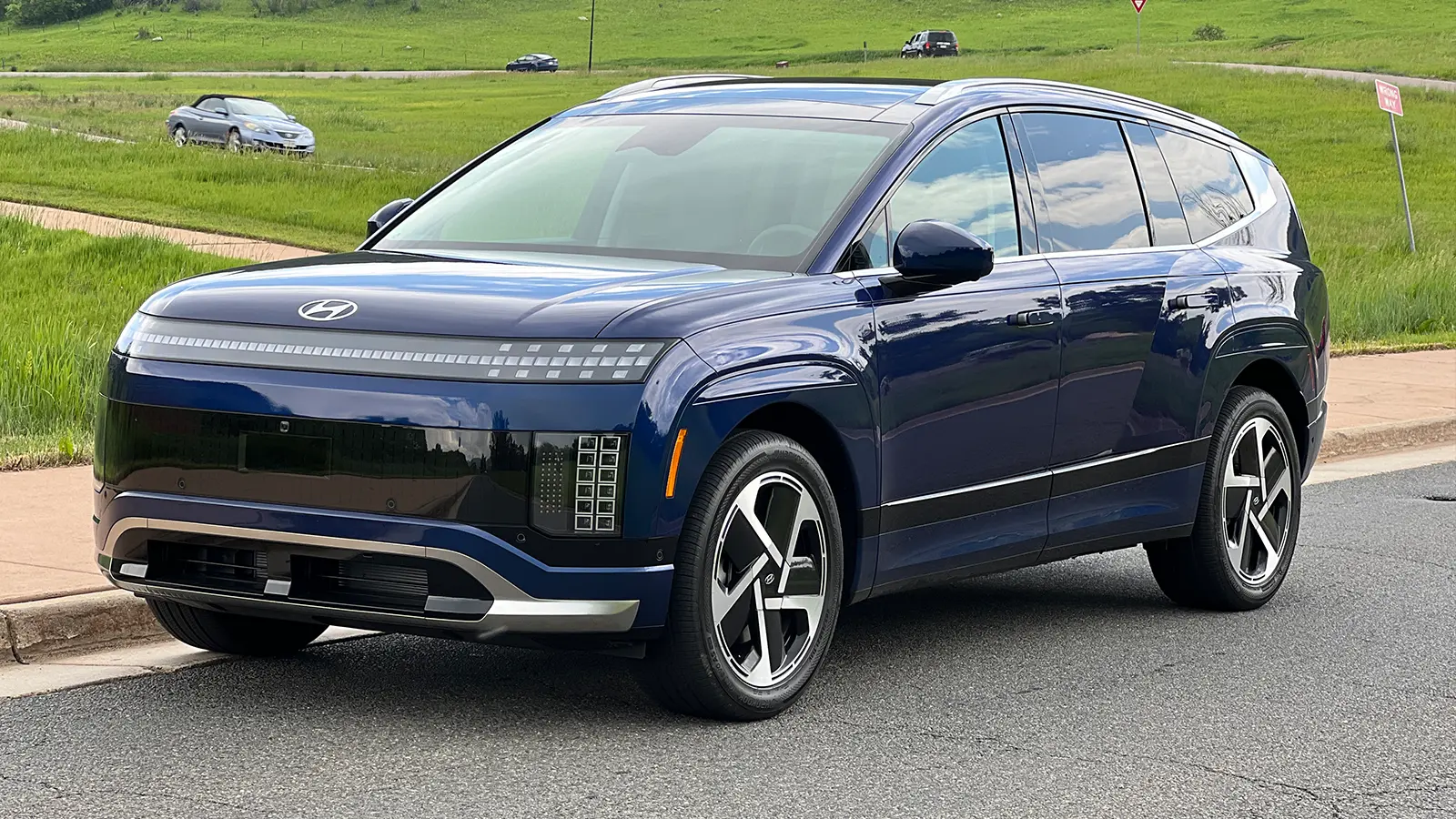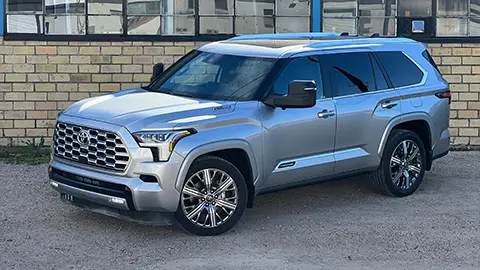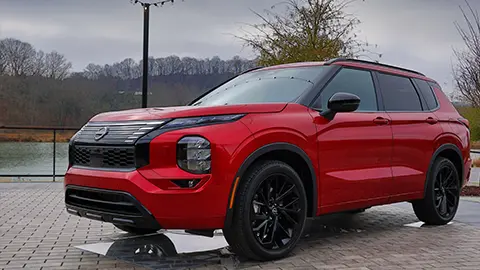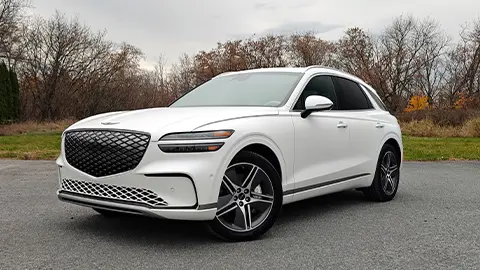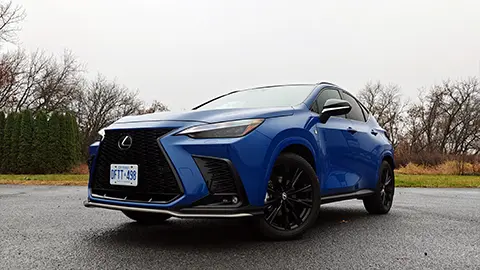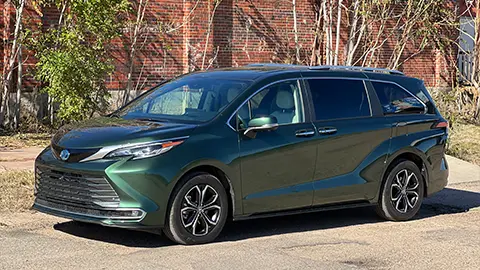The Brand's Biggest and Most Expensive EV Yet
The Hyundai Ioniq 9 blends an unusually wide array of virtues into a single vehicle. It’s roomy enough for up to seven passengers in three rows, offers a driver-assistance system that allows hands-free driving for short periods, and wears stunning show car-grade styling. Oh, and it won’t use a single drop of fuel.
Quick Specs
🔋 110.3 kWh battery delivers up to 335 miles (EPA estimated)
⚡ DC Fast Charging: 10–80% in ~40 minutes
📏 Seating for up to 7 passengers
🔌 Towing capacity up to 5,000 lbs
💺 Luxurious trims, advanced driver assistance, & dual 12.3" screens
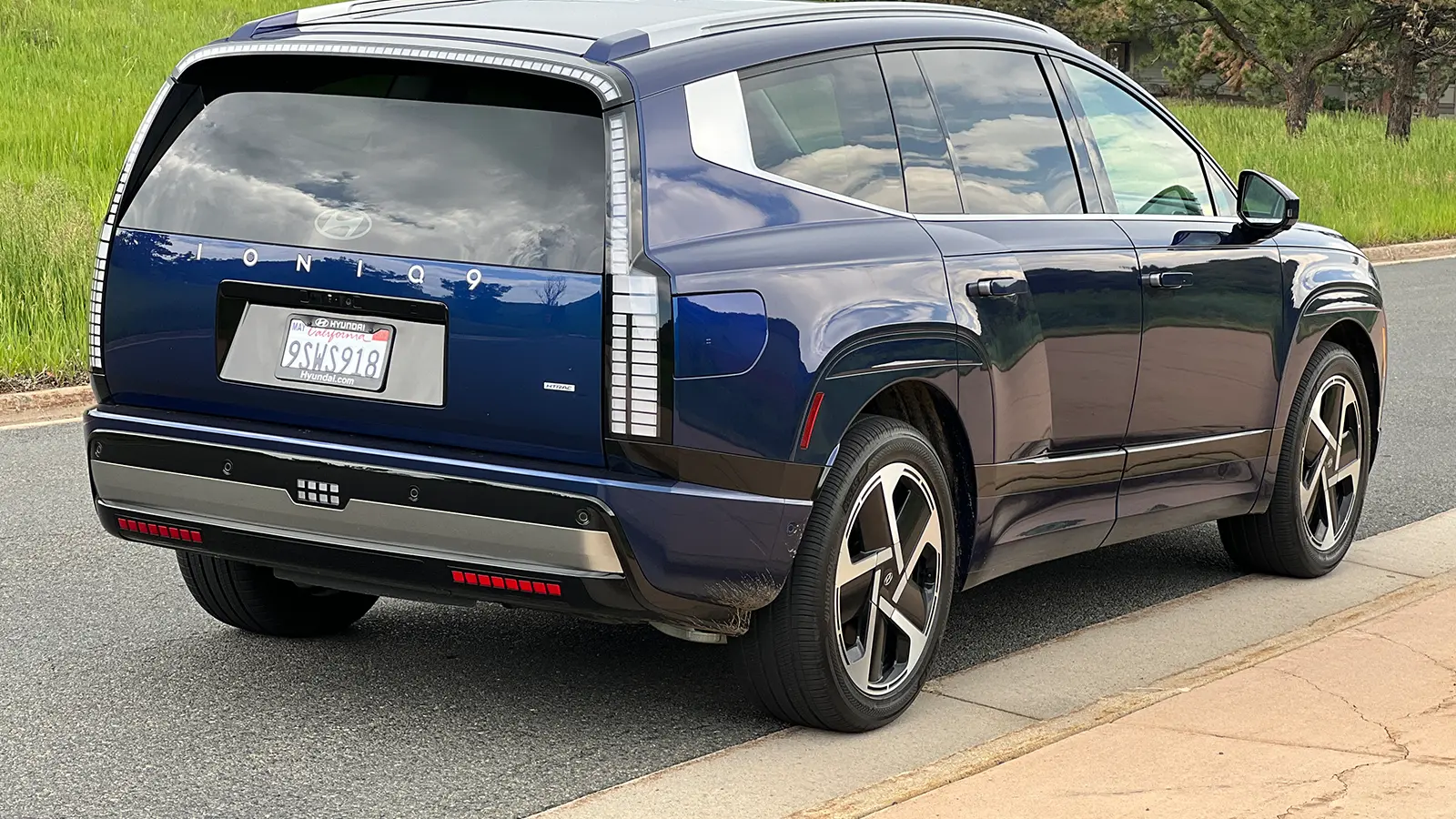
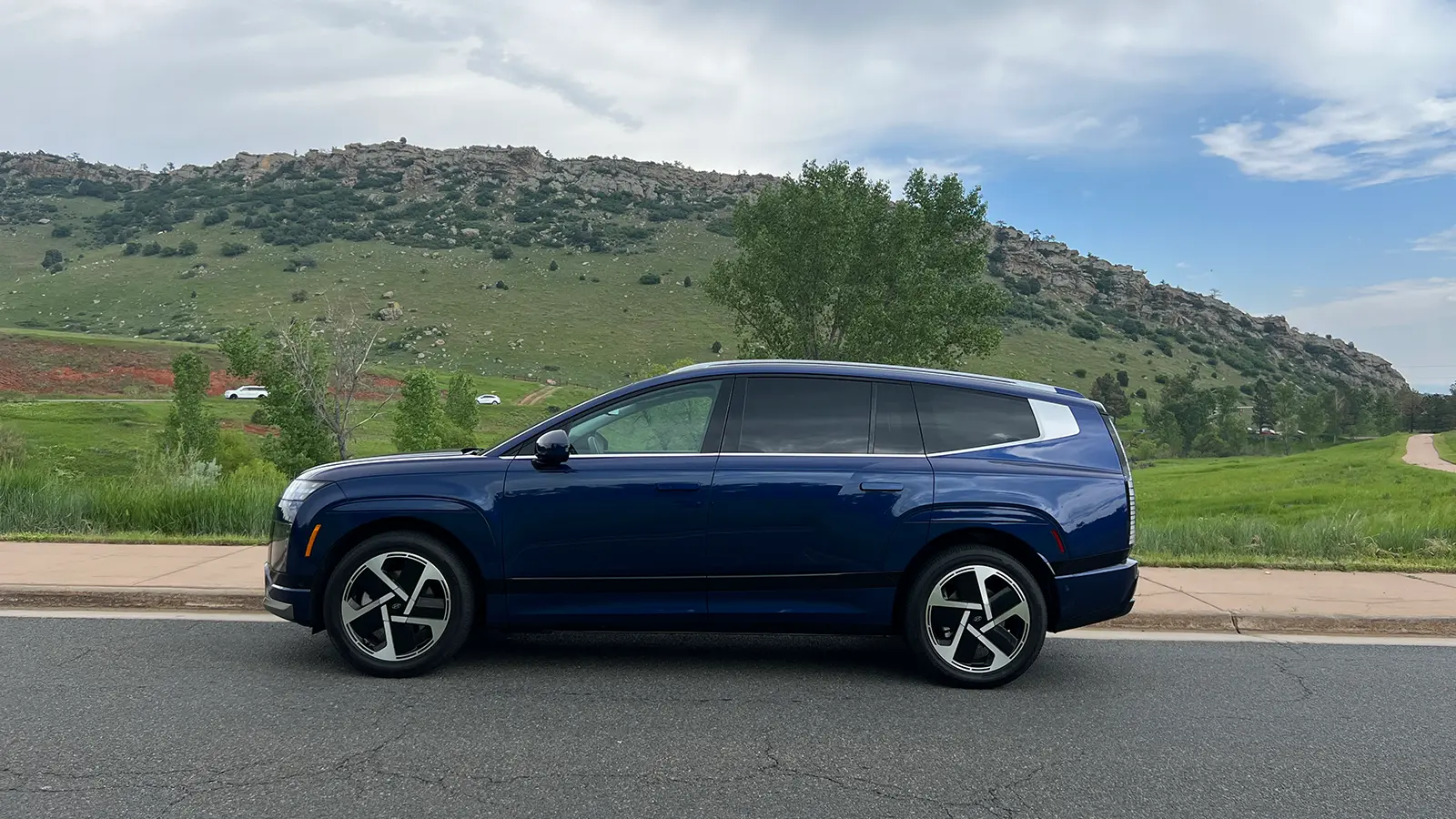
Three Configurations, Plenty of Range
The new-for-2025 Ioniq 9 is closely related to sister brand Kia’s EV9, though the two wear distinct styling, and the Hyundai's later arrival brings the benefit of a few extra years of refinement. While its footprint is similar to the automaker's gas-only Palisade, the two SUVs share little more than an infotainment interface.
Whether you want maximum range or more traction, Hyundai offers the Ioniq 9 in three electric powertrain setups. The most efficient is a single, motor, rear-wheel-drive (RWD) version with 215 horsepower, which can feel modest when nudging around a nearly 6,000-pound SUV. Dual-motor, all-wheel-drive (AWD) variants step things up with 303 to 422 horsepower, offering quicker acceleration and added confidence from the extra traction.
Range is where the Ioniq 9 really impresses. A 110.3-kilowatt-hour lithium-ion battery pack tucks under the cargo floor and delivers 335 EPA estimated miles for the single-motor version and 320 or 311 EPA estimated miles for the dual-motor setups. Even at the low end, that's more than the Kia EV9's EPA rating of 304 miles and should be enough for most road trips.
Charging is quick: Hyundai says a Tesla Supercharger can charge the battery from 10 to 80 percent in as little as 40 minutes. Home charging on an 11-kilowatt Level 2 charger takes a bit under 10 hours to do the same deed.
Dual-motor versions can tow as much as 5,000 pounds, and stylish 19-, 20-, or 21-inch alloy wheels fill the Ioniq 9’s big wells.
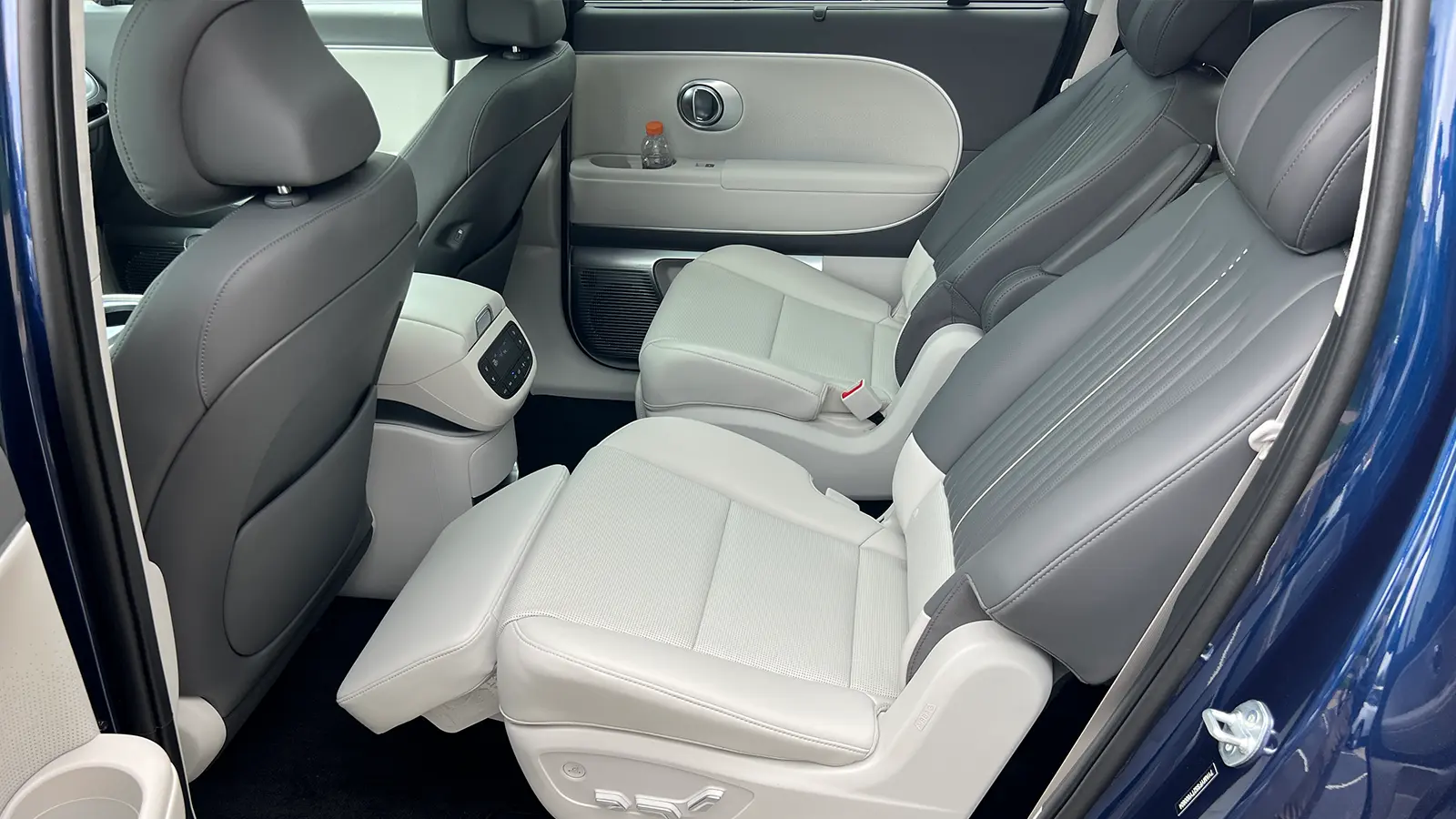
Room to Stretch For All Seven People
If you've ever tried to fit adults in the third row of a three-row SUV, you'll appreciate the Ioniq 9's garage-filling dimensions and mostly flat floor. It feels large and airy inside, and every passenger has stretch-out space.
The S, SE, and SEL can accommodate seven occupants with a second-row bench, while the higher-end Limited and Calligraphy swap in second-row captain’s chairs, reducing capacity to six.
Parents will love the wide range of car seat accommodations. There are lower and upper tethers in each outboard seat of the second and third rows. Plus, the passenger-side second-row seat tilts and slides forward (even with a forward-facing seat installed), giving easy access to the third row. It's not mirrored on the driver's side, but I still found it helpful.
The Ioniq’s dash takes a less-is-more approach to its style, but not its tech. A pair of 12.3-inch screens gives the cockpit a command-center feel. The central display is a touchscreen with built-in navigation, plus wireless Android Auto and Apple CarPlay compatibility. The top Calligraphy adds a head-up display, while it and the Limited swap in Bose speakers.
One quirk: The system defaults to a low-distraction home screen with every restart, which means users must tap it at least one extra time to unlock any adjustments. Otherwise, it’s a bright, crisp display with generally easy-to-follow menus. While some drivers may have a short adjustment period, Hyundai’s infotainment software is among the most intuitive on the market. It also provides easy, two-tap access to Apple CarPlay and Android Auto for those who prefer to let their smartphone do most of the thinking.
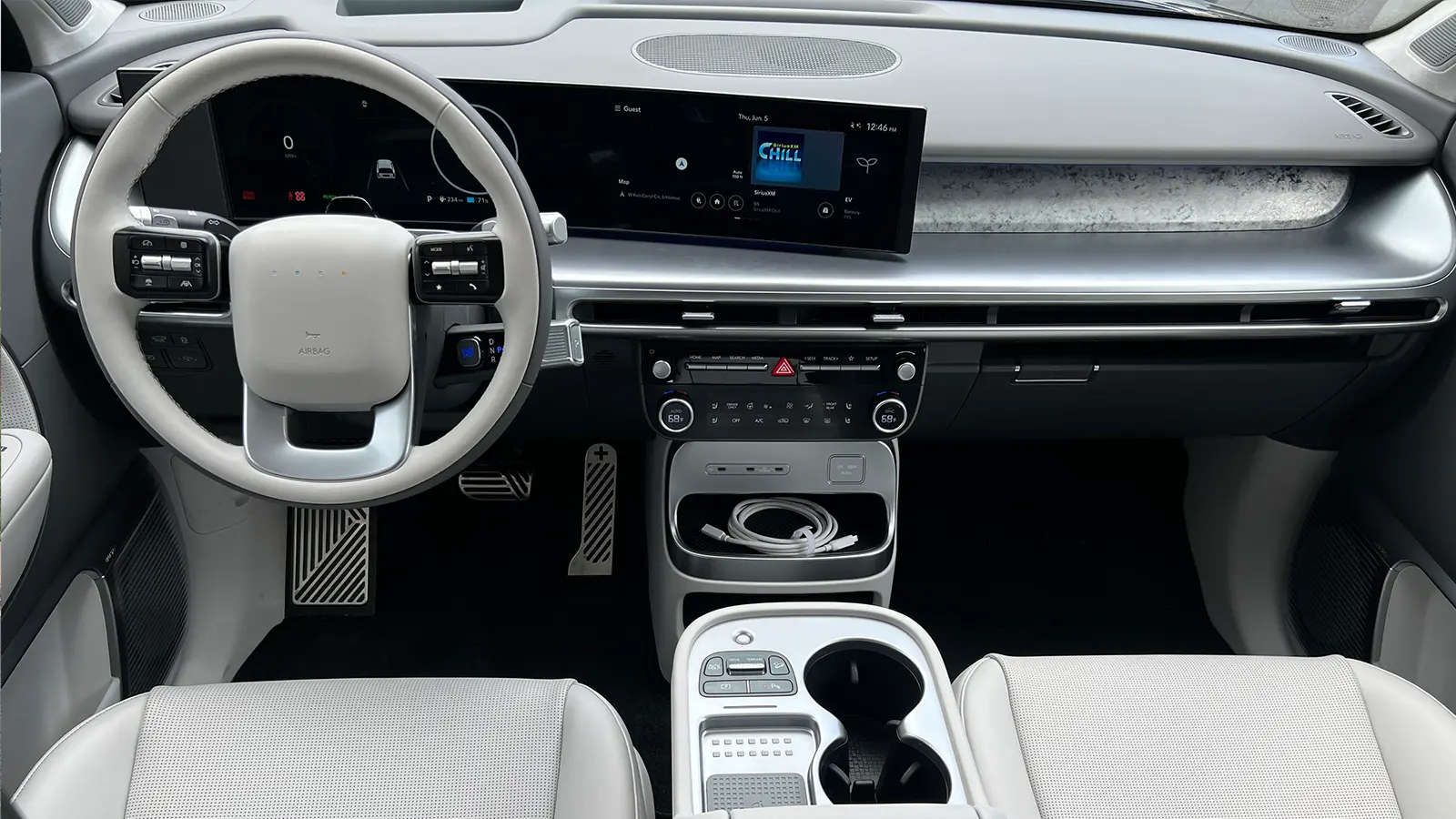
Quiet and Comfortable on the Road
The Ioniq 9 delivers one of the most serene driving experiences you’ll find today. It’s far from engaging, but it isn’t intended to be. Instead, it's hushed, with little road or wind noise, and its suspension swallows up big bumps and spits them out with only the tiniest intrusion into the interior. The road just whizzes by since so little noise enters the cabin, thanks largely to excellent insulation that extends to the acoustic windows.
Steering was direct and confident, if light on the sort of road feel you might find in a BMW XM — admittedly, a much more driver-focused EV. For day-to-day commuting on congested highways rather than winding back roads, drivers will likely prefer the Hyundai’s ingrained smoothness to the abruptness of its sporty competitors.
During my time driving the Calligraphy model, acceleration felt decent, if not exactly neck-snapping. Upward of 400 horsepower sure sounds like a lot, but it’s tasked with moving 6,000 pounds of SUV.
What impressed me most about the Ioniq 9 was how little I had to do behind the wheel. All trims have Hyundai’s Highway Driving Assist 2, a system that allows limited hands-off (but eyes-on) driving for short stints on the highway. It went a long way toward reducing driver fatigue and potentially warding off collisions.

Ioniq 9 is Priced and Outfitted Like a Luxury SUV
The Ioniq 9 is no cheap SUV. At $60,555 MSRP to start, including a mandatory $1,600 destination charge, it’s about $20,000 more than a Hyundai Palisade, but it comes loaded with features that justify the jump. Even the base S trim includes adaptive cruise control, wireless phone mirroring, navigation, and a host of safety features — all stuff that often costs extra elsewhere.
However, the base model is RWD only. Most folks will want the $66,365 MSRP SE for AWD, though oddly it doesn't add much else beyond a power-adjustable passenger seat.
The SEL trim might be the best value in the range at $67,920 MSRP. It adds synthetic leather upholstery, cooled front seats, heated second-row seats, a heated steering wheel, and some genuinely useful camera tech, including a surround-view system and a blind-spot camera that projects a live video feed into the 12.3-inch digital instrument cluster.
The $72,850 MSRP Limited trim adds the more powerful electric motor setup, plus a panoramic sunroof, power-folding third-row seats, and second-row captain’s chairs with power adjustment and a cooling function. It’s downright luxurious and arguably a better buy than the top $76,590 MSRP Calligraphy, which has some snazzier interior trim and can be parked remotely in tight spots.
There aren't many standalone options on the South Korea-built Ioniq 9, aside from some accessories like a cargo cover, roof rack cross bars, and the tow hitch needed to unlock its 5,000-pound capacity.
If you’re after an all-electric three-row SUV, the Ioniq 9 is worth the $4,000-ish upcharge compared to a Kia EV9. The two have similar interior dimensions and tech, but the Hyundai manages to feel a bit more refined, and it promises better range estimates.
The Hyundai isn’t as rugged looking as a Rivian R1S, but it provides access to a far larger dealer network and its infotainment system features Apple CarPlay and Android Auto compatibility.
More Great EV Reads from GreenCars
- 2025 Kia EV9: Everything You Need to Know
Explore Kia’s family-friendly electric SUV, offering seating for seven and competitive range.
Read More ➜ - Charging Speeds: How Fast is Fast Enough?
Demystify EV charging speeds and find out how quickly modern EVs like the Ioniq 9 can recharge.
Read More ➜ - Top Luxury Electric SUVs of 2025
Compare premium electric SUVs and see how the Hyundai Ioniq 9 stacks up against luxury competitors.
Read More ➜





